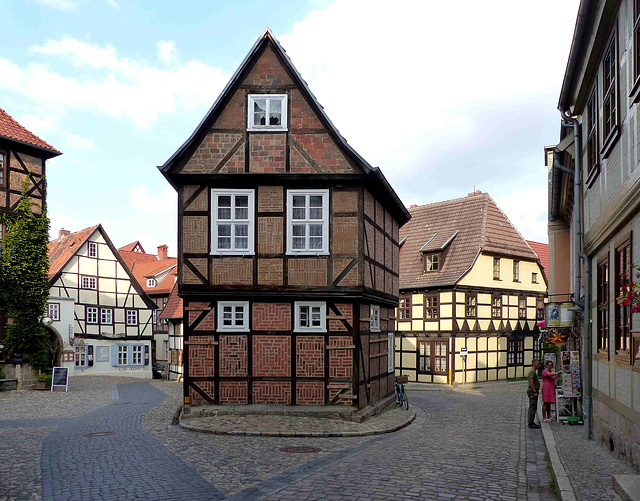Quedlinburg - Adler und Rats Apotheke
Quedlinburg - Jugendstil
Quedlinburg - Jugendstil
Quedlinburg - Elephant
Quedlinburg - St. Wiperti
Quedlinburg - St. Wiperti
Quedlinburg - St. Wiperti
Quedlinburg - St. Wiperti
Quedlinburg - St. Wiperti
Quedlinburg - St. Wiperti
Quedlinburg - St. Wiperti
Quedlinburg - St. Nikolai
Quedlinburg - St. Servatius
Quedlinburg - St. Servatius
Quedlinburg - St. Servatius
Quedlinburg - St. Servatius
Quedlinburg - St. Servatius
Quedlinburg - St. Servatius
Quedlinburg - St. Servatius
Quedlinburg - St. Servatius
Quedlinburg - St. Servatius
Quedlinburg - Wunderschrank
Halberstadt - Dom zu Halberstadt
Kloster Gröningen - St. Vitus
Kloster Gröningen - St. Vitus
Kloster Gröningen - St. Vitus
Kloster Gröningen - St. Vitus
Kloster Gröningen - St. Vitus
Kloster Gröningen - St. Vitus
Hadmersleben - St. Peter und St. Paul
Hadmersleben - St. Peter und St. Paul
Hadmersleben - St. Peter und St. Paul
Hadmersleben - St. Peter und St. Paul
Hadmersleben - St. Peter und St. Paul
Hadmersleben - St. Peter und St. Paul
Hadmersleben - Kloster Hadmersleben
Güsten - Gumball Machine
Ermsleben - Konradsburg
Ermsleben - Konradsburg / St. Sixtus
Ermsleben - Konradsburg / St. Sixtus
Ermsleben - Konradsburg / St. Sixtus
Ermsleben - Konradsburg / St. Sixtus
Ermsleben - Konradsburg / St. Sixtus
Ermsleben - Konradsburg / St. Sixtus
Ermsleben - Konradsburg / St. Sixtus
Location
Lat, Lng:
You can copy the above to your favourite mapping app.
Address: unknown
You can copy the above to your favourite mapping app.
Address: unknown
See also...
Keywords
Authorizations, license
-
Visible by: Everyone -
All rights reserved
-
98 visits
Quedlinburg


Quedlinburg is known to have existed since at least the early 9th century. It was first mentioned as a town in 922 as part of a donation by Heinrich I (Henry the Fowler).
According to legend, Henry had been offered the German crown at Quedlinburg in 919. After his death in 936, his widow Saint Matilda founded a nunnery, where daughters of the higher nobility were educated. The main task of this abbey, was to pray for the memory of Heinrich I and the rulers who came after him.
The Quedlinburg castle complex, founded by Heinrich I and built up by Otto I in 936, was an imperial Pfalz of the Saxon emperors. The Pfalz, including the male convent, was in the valley, while the women's convent was located on the castle hill.
In 973 during a Reichstag (Imperial Convention) Otto the Great introduced his new daughter-in-law Theophanu, a Byzantine princess whose marriage to Otto II brought hope for recognition and continued peace between the rulers of the Eastern and Western empires.
The town became a member of the Hanseatic League in 1426. The abbey frequently disputed the independence of the town, which sought the aid of the Bishopric of Halberstadt. In 1477, Abbess Hedwig, aided by her brothers, broke the resistance of the town and expelled the bishop's forces. Quedlinburg was forced to leave the Hanseatic League and was subsequently protected by the Electorate of Saxony. Both town and abbey converted to Lutheranism in 1539 during the Protestant Reformation.
According to legend, Henry had been offered the German crown at Quedlinburg in 919. After his death in 936, his widow Saint Matilda founded a nunnery, where daughters of the higher nobility were educated. The main task of this abbey, was to pray for the memory of Heinrich I and the rulers who came after him.
The Quedlinburg castle complex, founded by Heinrich I and built up by Otto I in 936, was an imperial Pfalz of the Saxon emperors. The Pfalz, including the male convent, was in the valley, while the women's convent was located on the castle hill.
In 973 during a Reichstag (Imperial Convention) Otto the Great introduced his new daughter-in-law Theophanu, a Byzantine princess whose marriage to Otto II brought hope for recognition and continued peace between the rulers of the Eastern and Western empires.
The town became a member of the Hanseatic League in 1426. The abbey frequently disputed the independence of the town, which sought the aid of the Bishopric of Halberstadt. In 1477, Abbess Hedwig, aided by her brothers, broke the resistance of the town and expelled the bishop's forces. Quedlinburg was forced to leave the Hanseatic League and was subsequently protected by the Electorate of Saxony. Both town and abbey converted to Lutheranism in 1539 during the Protestant Reformation.
Marco F. Delminho, Eric Desjours, Alexander Prolygin, Paolo Tanino have particularly liked this photo
- Keyboard shortcuts:
Jump to top
RSS feed- Latest comments - Subscribe to the comment feeds of this photo
- ipernity © 2007-2025
- Help & Contact
|
Club news
|
About ipernity
|
History |
ipernity Club & Prices |
Guide of good conduct
Donate | Group guidelines | Privacy policy | Terms of use | Statutes | In memoria -
Facebook
Twitter

Sign-in to write a comment.